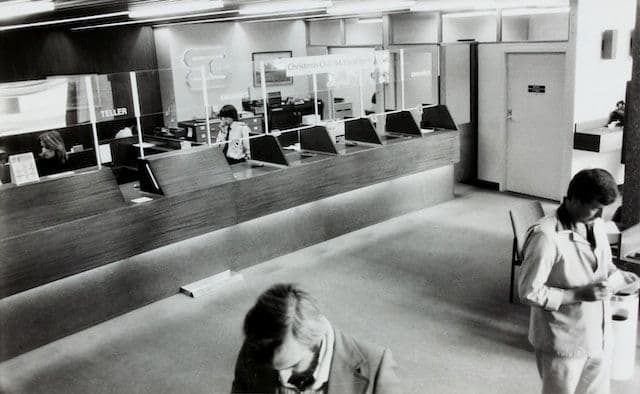- Why is communication important?
- 10 Techniques/Steps to Communicate Effectively
- Technique One: Understand the Type of Conversation
- Technique Two: Master the Art of Listening
- Technique Three: Learn Basics of Nonverbal Communication
- Technique Four: Understand Needs, Wishes, and Values
- Technique Five: Stay Engaged and Respect Others
- Technique Seven: Stick to the Topic
- Technique Eight: Listen to All Parties
- Technique Nine: Ask for Feedback
- Technique ten: ask questions
- To sum
Communication is the foundation of all human interaction. The ability to communicate effectively plays an essential role in all aspects of life, including personal and business interactions.
People use this soft skill to share ideas and information, form relations, and avoid misunderstanding. This is why effective communication often determines the success or failure of any business process.
Let us look into statistics because sometimes, numbers speak louder than words. According to Statistics on Employee Engagement, companies with effective programs for communication and support are 3.5 times more likely to beat out their rivals, while well-informed employees outperformed their peers by 77%. But why is communication important?
Why is communication important?
Communication is an integral part of any business. Business communication involves a constant
the flow of information, both internal and external. Management functions cannot be performed without effective communication among employees or with clients.
Just remember how many times you misunderstood your boss and it made your work life a nightmare. It has happened to me and certainly, it has happened to you.
Communication is important because it helps to avoid misunderstanding, frustration, and awkward situations. That is why smart CEOs and top-level managers always look for this skill when hiring. In 2016 LinkedIn conducted a survey in the United States, which shows that communication tops the list of the most sought-after soft skills among employers.
While some soft skills are essential for only workers of a certain level, communication is must-have for individual contractors, managers, and directors.
10 Techniques/Steps to Communicate Effectively
Whether you want to have better conversations in your social life or get your ideas across better at work, effective communication is a skill you can and should learn. Let’s examine the art of effective communication, with a particular emphasis on techniques to improve this essential soft skill.
Technique One: Understand the Type of Conversation
When talking with someone, it is helpful to understand what type of conversation you are involved in. If you are in a one-way conversation, you are not talking with someone, you are talking to someone. In two-way conversation participants both talk and listen.
The competitive conversation is yet another type of interaction where people are more concerned about their own perspectives. Last, but not the list you can be in cooperative conversation, where participants are interested in hearing and understanding the perspectives of others.
Every time you are involved in a conversation, take a moment to think about which conversation you are actually in. It is important because that determines the purpose of the conversation.
If you can correctly guess or understand the purpose, you can better speak to the heart of that conversation. But, if you misidentify the type of interaction you are in, you can fall into conversational hazards.
Technique Two: Master the Art of Listening
Effective communication starts with active listening. People want to know that you are trying to understand them. From my personal experience, I can tell that people often forget what you say, but they never forget how you make them feel. Try to pay close attention to what is being discussed and make others feel considered and appreciated.
Active listening is essential not only for the above-mentioned reason. People who are engaged listeners tend to understand topics discussed in more detail. They catch small nuances that sometimes make all the difference.
Furthermore, being an engaged listener also helps you to determine the current mood and intention of a speaker. As a consequence, you will be able to build a strong bond between you and another speaker.
If you are a manager, active listening should be your strong suit. Be attentive and actively encourage the other person to talk; promote their willingness to communicate.
Technique Three: Learn Basics of Nonverbal Communication
Once, during my university years, a professor of mine told me that communication is 93% non-verbal behavior and only 7% verbal. Are you surprised to hear this?
Honestly, I was shocked. However, with years I have learned that it takes only a couple of seconds for someone to determine whether they want to continue interaction or not.
To communicate effectively one should learn about the cultural background of a speaker. However, regardless of who you are speaking to, there are fundamental aspects of nonverbal communication you should consider.
For instance, adopt proper posture when having a discussion. Give a person personal space and maintain eye contact, if appropriate. Try to avoid crossing your arms, otherwise, this gesture will put up a barrier between you and the person you are speaking with. Most importantly, do not forget to smile and stay positive.
The way you look, listen, create, react, gesture, speaks far more about feelings than words will ever be able to.
Technique Four: Understand Needs, Wishes, and Values
Our values shape our thoughts, words, and actions. In most cases, values and needs are not expressed explicitly during verbal communication. Communication is important because it can detect those hidden attitudes. It might not be easy, but eventually, you will learn to read between lines.
Body language and facial expressions are our magic key to unlocking these hidden intentions and wishes. Learn to detect and interpret those signs to understand what a person is REALLY trying to say.
Technique Five: Stay Engaged and Respect Others
You tell your partner that you’re listening but haven’t looked up from your phone yet. Say that you are interested in a discussion but you constantly look at a watch. Our attitude to a person often reveals more than we think they do.
Aim for a respectful and inclusive quality of connection, so that everyone has time and opportunity to express their thoughts and be heard. Nobody likes to be interrupted in the middle of the conversation.
We all know that annoying feeling when we’re talking about something interesting and halfway through our sentence, we’re interrupted – “I don’t think you’re right”.
Dialogue is an exchange of ideas, not a competition. Don’t make a person feel like they never get to finish a thought. This will be an indication for your partner that you do not value and respect their thoughts. Furthermore, constant interruptions can ruin your relations with your partner.
Technique Six: Get Read of Fillers To Communicate Effectively
Effective communication should focus on what is important. Communicating well means that you can put your ideas in a clear, simple way that gets the message across.
Um’s and ah’s do very little to improve your personal or business interactions. Try to cut them out to be more persuasive and feel or appear more confident.
I know it's easier to say than do, but with practice everything is achievable! One way is to start tracking when you use those unnecessary fillers, like “um”. Start by doing this in conversations where you naturally feel comfortable. It may take some time, but eventually, you will stop using those fillers.
It’s totally normal to take time when responding to questions or formulating your suggestions. Those moments of silence seem less awkward than the constant use of um’s and ah’s.
Technique Seven: Stick to the Topic
Every minute our brain receives and analyzes tones of information. With background noises and our internal thoughts, it is difficult to focus on many topics at the same time. Try to limit each communication to a single topic.
Communications that stick to a single topic tend to be more effective. Try to remember the last meeting you attended where you attempted to cover multiple topics.
I can imagine what happened: participants probably go back and forth between them, especially at the end when last-minute questions pop up. Your notes ended up in a total mess. People look surprised at each other.
Focusing on one topic is an excellent start, but it is not enough. You should try your best to formulate that idea in a very simple, clear, and structured way.
The more information you include, the greater the chance that your audience will focus on the wrong thing. Focus only on what is essential; ignore the rest.
As a thought exercise, consider how you would explain your thought to a person who has no idea of what you are talking about. If you manage to do that, it means that you can deliver your message to absolutely anyone.
Think before you speak. Most of us work best when we have time to process our own thoughts before we share them. Even if you are in a leadership position, taking notes will never harm you.
Technique Eight: Listen to All Parties
In business communication, all parties should have the opportunity to share and express their own thoughts. Keep communication channels open to all members of staff.
If you are a manager, you can ensure that everybody is involved by conducting group discussions on certain topics. Before making a decision, consult with your team members. Listen to their ideas and feedback. It is essential to create a sense of ownership and responsibility among your employees.
Technique Nine: Ask for Feedback
No matter how clearly you try to formulate your idea, there needs to be some sort of reflection of the message. This is the only way to ensure that your message is correctly understood. This is where feedback comes in.
Feedback is quite simply a dialogue between people that reflects how a participant of dialogue sees another person's behavior or performance. Feedback is therefore a fundamental part of achieving effective two-way communication. Without feedback, communication can be entirely worthless.
This makes feedback a significant aspect of the communication process because it gives the speaker the opportunity to analyze the effect of the message.
It helps the sender ensure that the recipient has interpreted the message correctly. Feedback is therefore a necessary element in communication for achieving understanding.
Feedback is also essential during the internal communication process. It helps to ensure that both managers and other team members understand the message correctly. The feedback process is essential to create a sense of belonging and inclusion in communication.
Technique ten: ask questions
Albert Einstein said, “If I had an hour to solve a problem and my life depended on the solution, I would spend the first 55 minutes determining the proper question to ask, for once I know the proper question, I could solve the problem in less than five minutes.”
A powerful question can generate curiosity in the listener. If you are a manager of a large team, asking a well-formulated question can motivate others to be more active and involved in any kind of discussion.
Asking questions often stimulates reflective and meaningful conversations, generates energy, and invites creativity among participants.
To sum
Whether you are a person who is looking for a job, or a manager who oversees the business, communication skills are essential. At the end of the day, it's the company's success that may suffer from poor communication.
Written by

I am the CEO and founder of Overmentality. I am a professional business and technical blogs writer and on-page SEO specialist. I hold a degree in Culture Studies and Media Literacy from the English Humanities and Art Department. And I am interested in Digital Marketing, Business, Entrepreneurship, Leadership, and pets of course!
You can reach me via email here: hamiidnouasria@gmail.com
Or find me on my LinkedIn Profile.









